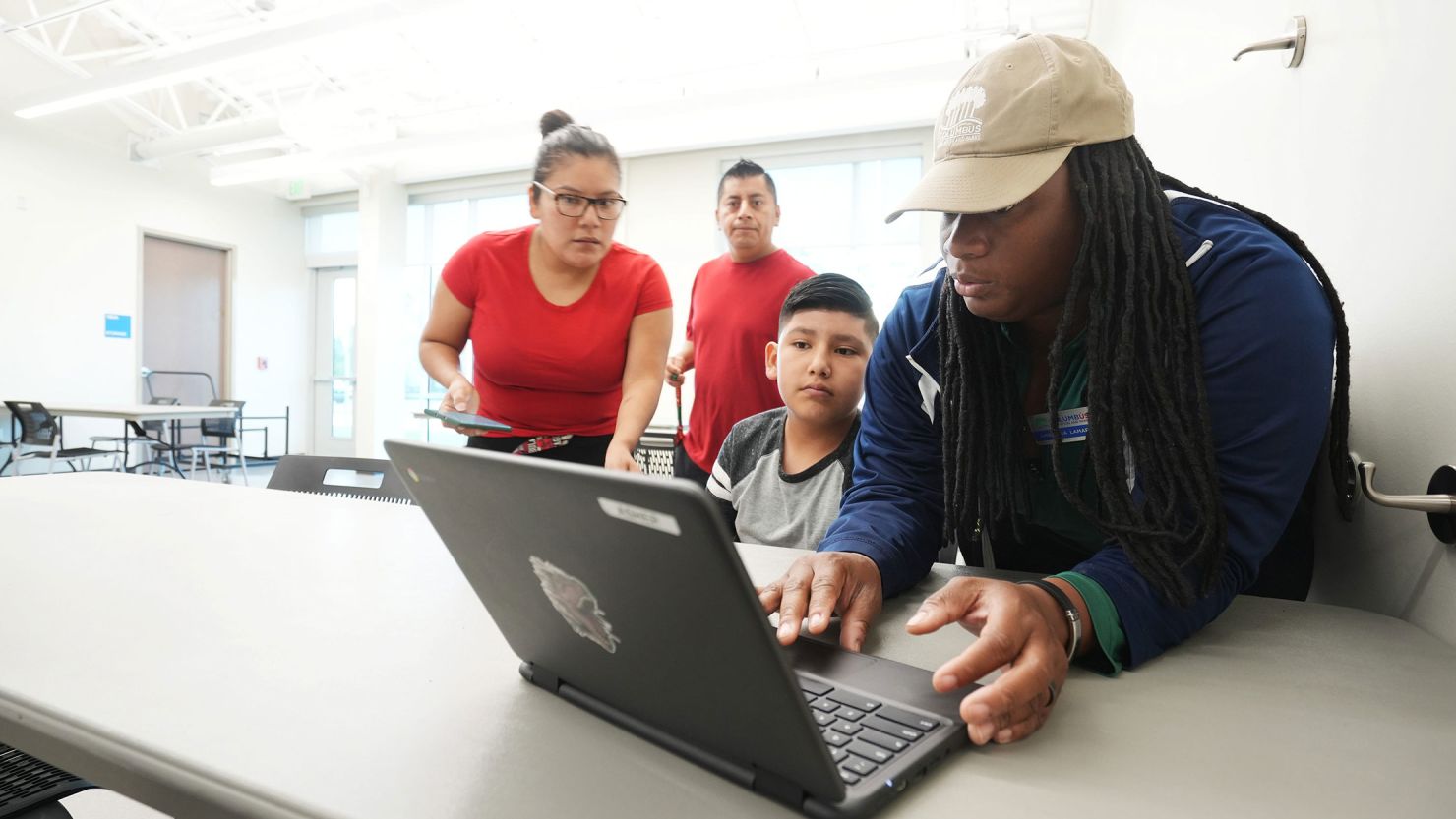The Columbus, Ohio, teachers’ union and the Columbus Board of Education have reached a “conceptual agreement,” ending a strike and allowing students to return to classrooms next week, the school district announced early Thursday morning.
The Columbus Education Association confirmed the agreement on Twitter, saying the “comprehensive conceptual agreement” was reached at 2:38 a.m.
Board of Education President Jennifer Adair said the district looks forward to welcoming students, teachers and staff back to school Monday.
“While the details cannot yet be disclosed, the contract recognizes the Board’s commitment to improving our student outcomes, the essential work of the (Columbus Education Association) members, and strengthening our learning environments,” Adair said in a statement.
Columbus City Schools first day of the new school year Wednesday was conducted online and classes will remain online for the remainder of the week, allowing for teachers to use Thursday and Friday for planning, Adair explained.
Regina Fuentes, a spokesperson for the Columbus Education Association, described the agreement as a “good deal” and “a win.” She said details will not be released until all union members review and vote on the ratification of the conceptual agreement, which will happen sometime over the weekend. Once both sides agree to the deal, classrooms can officially reopen.
“Let the history books reflect that this strike was about students who deserved a commitment to modern schools with heating and air conditioning, smaller classes and well-rounded curriculum that includes art, music and PE,” Fuentes said at a news conference.
CNN has reached out to the Columbus Board of Education for more details about the agreement.
The two sides had met Wednesday afternoon as they remained at odds over a new contract for teachers and school workers.
Teachers were seeking 8% pay raises, as well as commitments to improve heating and air conditioning in dilapidated buildings, smaller class sizes and more. The district had offered 3% pay bumps and balked at including language on school improvements in its contract with the union.
The school district relied on substitutes to lead virtual classes Wednesday as about 4,500 teachers, librarians, counselors and other school workers were on strike.
Before the agreement was reached, some students gathered at the Barnett Community Center, one of nine locations that the Columbus Recreation and Parks Department designated as support centers for students to complete their online work. Three students said they hoped the return to early pandemic-era virtual classes would be short-lived.
“We’re team school. We don’t want to go back to virtual,” said Coreaa Taylor, who is starting ninth grade at Walnut Ridge High School.
“It’s boring,” Jamaal Reed, who is starting 8th grade at Sherwood Middle School, said of virtual learning. “We want to see our friends. We still want to do stuff at school. It’s like a bond with friends that you don’t see unless you’re at school.”
“I really don’t want to be virtual,” said Linwood Allison, who is starting 12th grade at Walnut Ridge.
“When you’re at home, you’re not going to have that same ambition. At home, you want to be lazy,” Allison said. “Some people, they feel motivated by their classmates, or their teacher might help them out a lot.”
However, despite disliking remote learning, all three said the striking teachers made good points about overcrowded classrooms and heating and air conditioning problems.
At Walnut Ridge High School, where Columbus City Schools completed HVAC work in 2018, classrooms remain unreasonably hot, Allison said.
“They’re saunas,” he said. “Ridge needs a lot of work – like, a lot of work.”
Jazmyne Collins, a construction worker who was picking up a Chromebook for her 9-year-old daughter, said classroom conditions were “just as bad” when she was a student in Columbus City Schools.
“Sometimes you have to stand for something,” Collins said of teachers. “It’s a great cause. They’re asking for reasonable things for these children. I stand with the teachers – I’m all for it.”
Near Livingston Elementary School, Kelley Freeman, whose 5-year-old son Arthur Freeman Green is entering kindergarten, said she was frustrated and blamed the board of education for the impasse.
“He hasn’t really had an opportunity to be in public school before and I don’t think that virtual school with substitute teachers is an acceptable option,” she said of Arthur. “He deserves teachers who get fair pay who have safe and healthy classrooms with heat and air conditioning and not black mold.”
Freeman said she and her husband were “not going to cross the picket line” – meaning that they did not plan to have Arthur log on for virtual classes. But she acknowledged that, because she is self-employed and her husband works from home, “not every parent has the same kind of flexibility that we do.”
Superintendent Talisa Dixon acknowledged in a message to the families Wednesday evening that the first day of school “was not ideal.”
Dixon said she had met some families that had stopped at the district’s 25 sites to pick up grab-and-go meals and Chromebooks.
Students and parents had reported difficulty signing into virtual classrooms and remaining connected throughout the day. The Columbus Dispatch reported that some parents were frustrated they were unable to pick up laptops or Wi-Fi hotspots on Wednesday and had been told to return to locations where that equipment should be available Thursday.
“The first day also brought some unexpected challenges. While we were determined to prepare for today’s unusual start, we fell short in some areas,” Dixon said.
“I want to assure you that our team is working hard to improve the systems and processes in place as we move forward in this unique environment,” she said. “We are adjusting how we distribute technology resources and how we monitor attendance while improving access to our online resources. We will continue to work until we solve these problems.”
CNN’s Amy Simonson, Kim Berryman and Lucy Kafanov contributed to this report.







